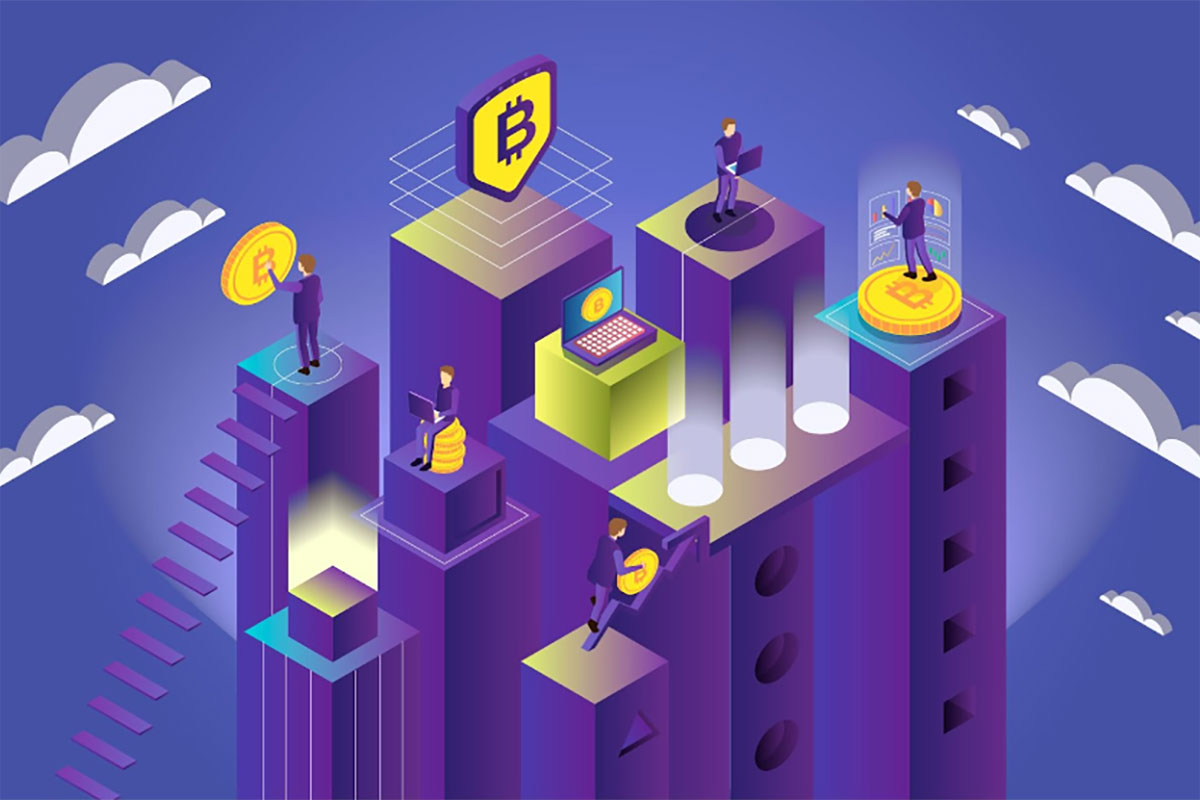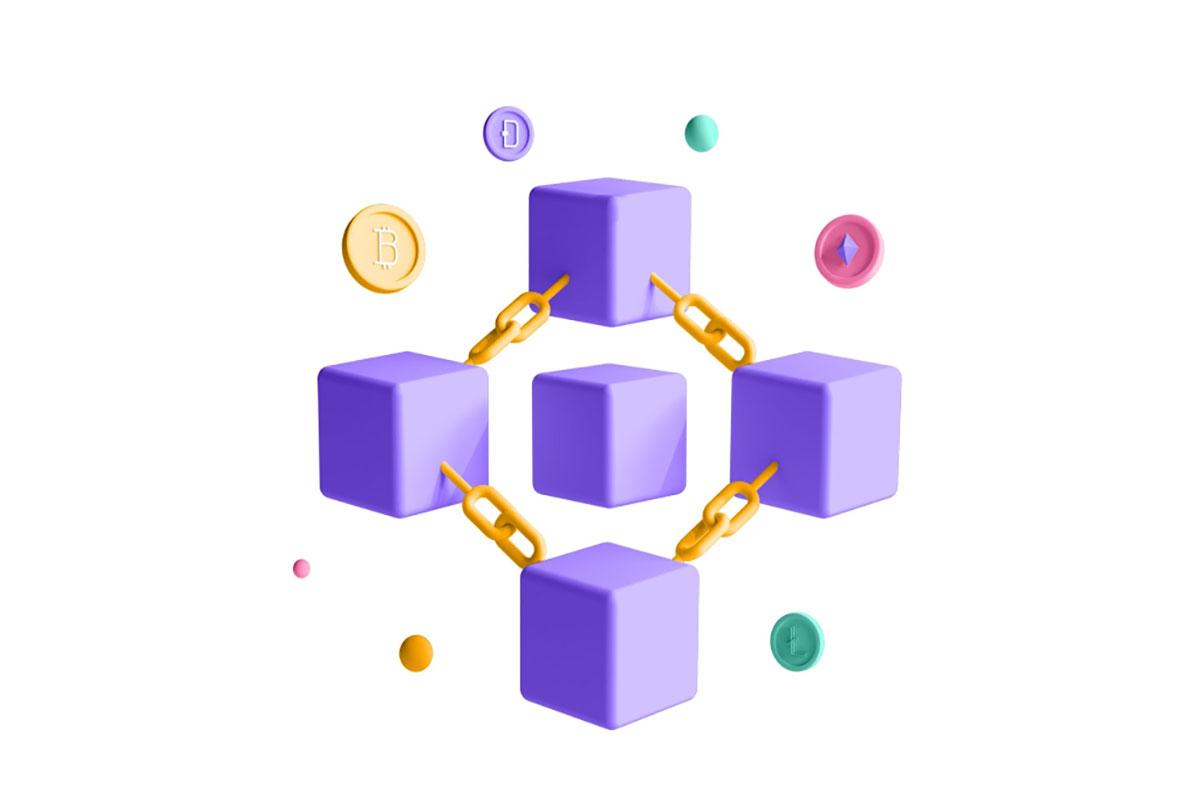Blockchain technology has emerged as a revolutionary tool in the digital world, fundamentally altering how data is stored and transactions are conducted. Originating as the underlying framework for cryptocurrencies, blockchain has rapidly expanded its influence, showcasing versatility across various sectors.

The introduction of blockchain technology significantly changed how digital transactions were conducted, leading to a series of innovative developments that are still evolving. As we explore more about the fundamentals and progress of blockchain, its profound impact on technology and society becomes increasingly apparent.
The Basics of Blockchain
Blockchain technology is a digital ledger that records transactions across a network of computers. Each transaction is recorded and verified within a block, forming a chain.
Each transaction within the blockchain is secured using cryptographic principles, ensuring that data integrity is maintained. The blockchain ledger’s transparency means that all network participants can view the transaction history, although personal identity details are often kept anonymous.
The consensus mechanism is another fundamental aspect of blockchain. A protocol determines how agreement is reached on the ledger’s state. Proof of Work and Proof of Stake are common consensus mechanisms, each with its unique approach to validating transactions and maintaining ledger integrity.
Evolution and Growth
Initially conceptualized in 1991 as a method for timestamping digital documents, the true potential of blockchain was realized in the creation of Bitcoin in 2009 by an individual or group known as Satoshi Nakamoto.
Post-Bitcoin, the blockchain landscape witnessed a proliferation of cryptocurrencies, each adding new dimensions and capabilities to the original concept.
Ethereum, introduced in 2015, introduced the concept of smart contracts, expanding blockchain’s applications beyond mere currency transactions. This innovation opened doors for decentralized applications (dApps), further diversifying the use cases of blockchain technology.
The growth of blockchain has been characterized by its increasing adoption across various industries. Blockchain’s potential for secure, transparent, and efficient data management has been recognized and harnessed from finance to supply chain management, healthcare, and even governance.
Blockchain in Global Finance
Blockchain technology offers a decentralized framework, challenging traditional centralized banking systems. Its impact on global finance is characterized by enhanced security, transparency, and efficiency in financial operations.
The integration of blockchain into finance has led to the redefinition of payment systems and asset management. It facilitates faster transactions and reduces the costs associated with cross-border payments, making financial processes more streamlined and accessible.
The trust and immutability inherent in blockchain technology also contribute to reducing fraud and ensuring the integrity of financial records.
Revolutionizing Currency with Cryptocurrencies
Unlike traditional currencies, cryptocurrencies are decentralized, operating independently of a central bank. This fundamental shift has introduced a new level of autonomy in financial transactions.
The most notable cryptocurrency, Bitcoin, emerged as a digital alternative to traditional money, offering a peer-to-peer transaction system. Its underlying blockchain technology ensures transactions’ security, transparency, and immutability.
As stated before, following Bitcoin, many other cryptocurrencies like Ethereum, Ripple, and Litecoin have surfaced, each with unique features and uses.
Expanding Financial Access
This expansion is evident in several key areas:
- Global Remittances: Blockchain facilitates lower-cost and faster cross-border transactions, making it easier for migrant workers to send money home. Traditional banking systems often impose high fees and slow transfer times, but cryptocurrencies circumvent these barriers, providing a more efficient remittance solution.
- Microfinance and Peer-to-Peer Lending: Blockchain technology enables individuals and small businesses in developing countries to access micro-loans and peer-to-peer lending platforms.
- Financial Inclusion Initiatives: Various projects and startups are utilizing blockchain to create digital identities and credit histories for those without access to traditional banking services. This approach is pivotal in integrating a larger segment of the global population into the formal economy.
- Cryptocurrency as an Investment: The rise of digital currencies has also opened new investment opportunities. Platforms and resources providing the latest crypto news keep investors informed, democratizing access to investment information that was once the preserve of a select few.
In essence, blockchain is not just transforming existing financial systems but is also creating novel avenues for economic participation and empowerment.

Blockchain for Social Good
Beyond its financial applications, blockchain’s security, transparency, and decentralization attributes are being harnessed to address critical social challenges. This innovative application of blockchain technology demonstrates its potential to create a positive societal impact.
In sectors like healthcare, education, and poverty alleviation, blockchain is emerging as a tool for transformation and empowerment. Ensuring secure and transparent data management enhances social programs’ efficiency and trust.
Blockchain’s ability to provide immutable records and streamlined processes is invaluable in areas where traditional systems must catch up. The exploration of blockchain in these domains opens new avenues for addressing complex social issues, marking a new era in technology-driven social change.
Case Studies in Healthcare
One notable example is the use of blockchain for secure patient data management. Estonia’s healthcare system, for instance, employs blockchain to protect patients’ medical records. Allowing patients to control who accesses their data enhances privacy and security, a significant concern in healthcare information systems.
Another application is in supply chain management for pharmaceuticals. Companies like Pfizer and Genentech have experimented with blockchain to track drug shipments. This technology ensures the authenticity of drugs, combats counterfeit medications, and ensures patient safety.
Blockchain has also been instrumental in optimizing clinical trials. Blockchain can reduce the time and cost associated with clinical research while maintaining data integrity and compliance with regulatory standards.
Blockchain’s Role in Education
A primary application of blockchain in education is verifying academic credentials. With blockchain, educational institutions can issue tamper-proof diplomas and certificates, simplifying the verification process for employers and other schools.
Another area where blockchain is making strides is in protecting intellectual property. Educators and researchers can use blockchain to secure and manage digital rights for their materials, ensuring that their work is properly attributed and compensated.
Blockchain enables the creation of decentralized educational platforms where learners can access various resources from different providers, fostering a more collaborative and inclusive educational environment.
Addressing Poverty Through Technology
One significant application is in improving financial inclusion. Blockchain enables the creation of decentralized financial services, offering access to banking, credit, and insurance to populations traditionally excluded from these systems.
Blockchain also plays a role in enhancing agricultural practices in developing countries. It can help them get better prices for their produce, thus increasing their incomes.
Blockchain-based solutions can also be used to verify land ownership, a significant issue in many developing regions, thereby securing farmers’ rights and livelihoods.
Blockchain aids in the efficient distribution of aid and resources. It ensures that aid reaches its intended recipients, reducing the risk of corruption or mismanagement.
Blockchain in Disaster Response and Humanitarian Aid
It is emerging as a critical tool in enhancing the effectiveness of emergency management. This technology’s ability to provide secure, transparent, and rapid coordination of data and resources is invaluable in crises.
Blockchain’s decentralized nature ensures that information and resources are managed efficiently, reducing the likelihood of bottlenecks and mismanagement. It can significantly improve decision-making processes in disaster response scenarios, where timely access to accurate information is crucial.
Blockchain can also be instrumental in tracking aid distribution, ensuring that resources reach those in need, and reducing the risk of fraud. This level of accountability is essential in maintaining trust between aid providers and recipients.
Improving Efficiency in Crisis Situations
This is a significant advancement in emergency management and humanitarian aid. The application of blockchain in these areas brings several critical efficiencies:
- Rapid and Secure Data Sharing: In crises, the swift exchange of information is crucial. Blockchain enables instantaneous data sharing across various agencies and stakeholders while maintaining data integrity and security.
- Supply Chain Transparency: Blockchain publicly records supply movements and inventories. This visibility is essential for:
- Avoiding duplication of efforts in aid distribution.
- Ensuring timely delivery of essential supplies to affected areas.
- Resource Tracking and Allocation: Blockchain’s ledger system effectively tracks resources, ensuring they are allocated where most needed. This includes:
- Monitoring the flow of funds to prevent fraud.
- Tracking the distribution of aid materials to avoid misappropriation.
- Identity Verification: In displacement crises, verifying identities can be challenging. Blockchain can securely store identification information, aiding in:
- Reuniting families separated during disasters.
- Ensuring aid reaches the right people.
These efficiencies highlight blockchain’s potential to transform emergency response mechanisms, making them more responsive, transparent, and effective in times of crisis.
The Future of Blockchain
As this technology matures, blockchain’s potential applications and impacts across various industries are becoming increasingly evident.
Integrating blockchain with technologies like artificial intelligence (AI), the Internet of Things (IoT), and big data analytics will open new frontiers for its application.
The anticipation surrounding the future of blockchain is about its technological capabilities and its potential to reshape business models and create new economic and social paradigms.
Predicting the Next Steps
Predicting the Next Steps for blockchain technology involves examining its potential future developments and applications. While precise predictions are challenging, several key areas are emerging as likely focal points for blockchain’s evolution:
- Enhanced Scalability and Speed:
-
-
- Current blockchain networks need help with scalability and transaction speed. Future developments should focus on overcoming these limitations, possibly through new consensus mechanisms or off-chain solutions.
-
- Interoperability Between Different Blockchains:
-
-
- As the number of blockchain platforms grows, there will be an increased need for interoperability. This would allow for seamless information and value exchange across different blockchain networks.
-
- Regulatory Developments:
-
-
- The legal and regulatory landscape surrounding blockchain is still evolving. Future steps will likely include the establishment of more comprehensive regulatory frameworks that balance innovation with consumer protection.
-
- Blockchain and Sustainability:
-
- There is a growing focus on using blockchain to support sustainable practices and green initiatives. This includes its application in tracking carbon credits and promoting renewable energy sources.
These areas represent just a fraction of the potential pathways for blockchain’s future development, indicating a landscape ripe with opportunities for innovation and growth.
Expert Opinions and Market Trends
Industry leaders and analysts are closely observing several trends and expressing diverse opinions on the trajectory of blockchain technology.
- Diversification of Blockchain Applications: Experts note a shift from blockchain’s predominant use in cryptocurrencies to a broader range of healthcare, finance, and supply chain management applications.
- Increased Institutional Adoption: Experts widely agree that institutions’ adoption of blockchain technology will continue to grow.
- Focus on Security and Privacy: With the increase in data breaches and growing privacy concerns, blockchain technology is expected to focus more on improving these aspects.
- Growth of Decentralized Finance (DeFi): The rapid growth of DeFi is a trend closely watched by market analysts. It represents a significant shift in the financial sector, offering more autonomy and accessibility to users.
The Role of Analytics in Shaping Blockchain’s Future
Analytics, particularly from specialized sources like a marketing analytics agency, is crucial in deciphering blockchain’s vast data landscape. These insights are vital for understanding network dynamics, user engagement, and potential areas for innovation.
Through advanced analytical tools, stakeholders can monitor blockchain efficiency, identify usage patterns, and predict future trends. This information is crucial for optimizing blockchain platforms and ensuring they meet user needs and industry standards.
As blockchain continues to intersect with various sectors, the insights provided by analytics will be instrumental in guiding its evolution. This symbiotic relationship between blockchain and analytics heralds a future where data-driven decisions propel blockchain’s growth and effectiveness.
Conclusion: The Transformative Potential of Blockchain
From revolutionizing financial systems to innovating healthcare, education, and humanitarian aid approaches, blockchain stands as a beacon of innovation and efficiency. Its core attributes of decentralization, transparency, and security are paving the way for new data management and transaction processing paradigms.
As Don Tapscott, a leading authority on blockchain, aptly puts it, “Blockchain represents the second era of the internet.” The ongoing advancements and applications of blockchain signify a shift towards more secure, transparent, and equitable digital infrastructures.
In conclusion, the journey of blockchain is still unfolding, with its full potential yet to be realized. Its continued evolution and adoption across various domains will undoubtedly contribute to a more connected and empowered global society.









